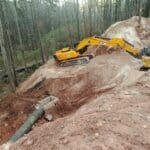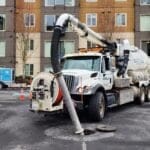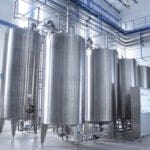City of Tuscaloosa
The City of Tuscaloosa has enacted a Stormwater Ordinance in order to establish minimum stormwater management requirements and controls to protect and safeguard the general health, safety, and welfare of the public residing in watersheds within this jurisdiction. The City of Tuscaloosa is the permitting authority for all land disturbing activities and requires the land owner to maintain all on-site stormwater control facilities and all open space areas (e.g. parks or “green” areas) required by the approved stormwater control plan. The City of Tuscaloosa will only provide construction permits to projects that establish a plan to manage stormwater runoff occurring during the construction process. The City of Tuscaloosa, under the NPDES program, also has the authority to inspect properties for noncompliance and can issue a notice of violation (NOV) for any deficiency or infraction onsite. Property owners are responsible for the maintenance of any stormwater facilities or practices located on the property. The City of Tuscaloosa has the authority to inspect stormwater facilities and practices in order to ascertain that they are properly maintained and functioning.
BMP Outline- Control Measure 4: Post-Construction Stormwater Management in New Development and Re-Development
4.5 POST BMP INVENTORY
The City shall maintain an inventory of newly developed and redeveloped sites that incorporate post‐construction structural controls. Maintain inventory of LID/GI practices implemented at sites within MS4. Inventory will guide inspection and enforcement practices. Post‐construction structural controls shall be recorded on a dedicated spreadsheet and included in the SWMPP annual report.
4.6 POST BMP ANNUAL INSPECTION
Personnel shall inspect post‐construction structural controls to ensure installation, function, and maintenance are adequate and in accordance with plans and agreements. Post‐construction structural control inspections shall be performed annually using a dedicated Post BMP Annual Inspection form. Any deficiencies noted will be appropriately addressed using the Escalating Enforcement Procedure. The number of inspections and any enforcement actions will be documented and included in the SWMPP annual report.
4.7 POST BMP TRAINING
Appropriate personnel will be trained to inspect post‐construction structural controls. Annual training shall be conducted for appropriate personnel in regard to the installation, inspection, and maintenance requirements of post‐construction structural controls. The number of trainings conducted, attendees, and material presented shall be documented and included in the SWMPP annual report.
Municipal Code: City of TUSCALOOSA
ARTICLE IX. – STORMWATER PHASE II
Sec. 21-150. – Preamble, findings of fact and intent.
- Under the stormwater phase II final rule, the small MS4 stormwater management program must include the following six (6) minimum control measures, except where a statewide NPDES program exists to address that control measure:
- Public education and outreach. Distributing educational materials and performing outreach to inform citizens about the impacts polluted stormwater runoff discharges can have on water quality;
- Public participation/involvement. Providing opportunities for citizens to participate in program development and implementation, including effectively publicizing public hearings and/or encouraging citizen representatives on a stormwater management panel;
- Illicit discharge detection and elimination. Developing and implementing a plan to detect and eliminate illicit discharges to the MS4.
- Construction-site runoff control. Developing, implementing, and enforcing an erosion and sediment control program for construction activities that disturb one or more acres of land or less, if part of a larger common plan or development. ADEM Administrative Code Ch. 335-6-12 implements a statewide construction stormwater regulatory program consistent with NPDES requirements for construction activities.
- Postconstruction runoff control. Developing, implementing, and enforcing a program to address discharges of postconstruction stormwater runoff from new development and redevelopment areas. ADEM Administrative Code Ch. 335-6-12 implements a statewide construction stormwater regulatory program consistent with NPDES requirements for postconstruction activities.
- Pollution prevention/good housekeeping. Developing and implementing a program with the goal of preventing or reducing pollutant runoff from municipal operations. The program must include municipal staff training on pollution prevention measures and techniques.
Sec. 21-152. – Illicit discharges.
Recognizing the adverse effects that illicit discharges can have on receiving waters as well as the health, safety, and welfare of local citizens, this article implements and enforces an illicit discharge detection and elimination program.
(e) Inspection. Inspections by the director of transportation/city engineer or his representative for the purpose of identifying potential illicit discharges shall be made as part of the subdivision, site development, or building inspection process, or as the response to a citizen complaint or city council request. Inspections to identify pollutant sources from upland areas may also be generated by the discovery and subsequent investigation and tracing of downstream pollutants in the MS4.
(f) Enforcement. Every effort shall be made to achieve the resolution of isolated violations of this article via the established subdivision, site development permit, and building inspection procedures. Repeated or gross violations of this article or those violations where the aforementioned measures cannot be successfully applied shall be treated as a violation of the Code of Tuscaloosa punishable in accordance with section 11-45-9, Code of Alabama, 1975.
ARTICLE XII. – REGULATION OF CERTAIN LAND DEVELOPMENT ACTIVITIES
Land Development Activities Regulations Generally
Sec. 21-210. – Purpose.
The purpose of this article is to establish minimum standards for design and construction of site grading and site and land development projects within the city and within its police jurisdiction. These minimum standards for land development activities are intended to protect and promote the public health, safety and general welfare by requiring the developing party to achieve these goals:
- The design and construction of safe and durable streets, driveways and parking lots.
- The design and construction of adequate stormwater drainage systems to reduce flooding.
- The design and construction of adequate, reliable and durable sanitary sewer systems that prevent illicit discharges.
- Preparing complete and accurate plans to enable the developing party to adequately address grading and lot issues.
- Insuring that there are adequate measures in place to control erosion and sediment and that stormwater pollution is reduced and controlled through establishment and maintenance of best management practices during construction and development activities.
- That appropriate measures have been taken to maintain stormwater sewer systems.
Sec. 21-211. – Scope.
This article does not contain all the regulations and requirements for development activities, design and construction nor does a permit issued pursuant to the provisions hereof serve as a substitute for obtaining and complying with all other applicable city ordinances, building and related codes, zoning restrictions, and other applicable regulations. Without limiting the generality of the foregoing development activities may also require building and related technical permits and inspections, compliance with zoning and subdivision ordinances and regulations. Municipal utilities for water and sewer require compliance with separate ordinances and policies of the water and sewer department of the city.
Sec. 21-215. – Design objectives.
The purpose of this article is to establish minimum requirements to be met by a developer or persons with respect to development and driveway activities on property in the area. The design objectives of the developers land development plan and application for a land development permit shall sufficiently and adequately address the following issues:
- Safe and functional design of roads, streets, driveways, and parking lots.
- Safe and functional design of sidewalks, walkways, trails and other pedestrian routes.
- Safe and functional design of drainage inlets, culverts, pipes and open channels.
- Minimize flooding, interruptions of utility service, traffic inconvenience and potential water damage to residences and businesses.
- Minimize the amount of public expenditures needed for maintenance of streets and roads, flood control projects, flood relief efforts, and stormwater facility maintenance.
- Preservation of trees, woods, natural meadows and other green spaces as much as possible (in conjunction with allowable land uses and zoning codes).
- Protect and enhance streams, wetlands, waterways and rivers for wildlife and plants by reducing stormwater pollution, erosion, and negative stormwater impacts.
- Promote development of recreational facilities and design aesthetics along streams, waterways, wooded areas and other green ways to benefit local neighborhoods.
- Protect and enhance the source of drinking water for the city in Lake Tuscaloosa, Harris Lake and Lake Nicol.
- Eliminate illicit discharges in the area.
- Protect and promote the general welfare of all citizens by achieving the goals of this article.
- Preserve and protect existing utilities and utility easements.
City of Tuscaloosa Stormwater Documents
State of Alabama Stormwater Documents

 Kenosha, Wis. Highway KR Regenerative Stormwater ConveyanceThe Root-Pike Watershed Initiative Network Kenosha County, and others worked with AQUALIS to design and implement an innovative solution for stormwater control along Highway KR.
Kenosha, Wis. Highway KR Regenerative Stormwater ConveyanceThe Root-Pike Watershed Initiative Network Kenosha County, and others worked with AQUALIS to design and implement an innovative solution for stormwater control along Highway KR. Durham, N.C. Sinkhole Leads to Stormwater System RehabilitationThe tenant on this property noticed a depression that opened to the ground below and notified the property owners.
Durham, N.C. Sinkhole Leads to Stormwater System RehabilitationThe tenant on this property noticed a depression that opened to the ground below and notified the property owners.

